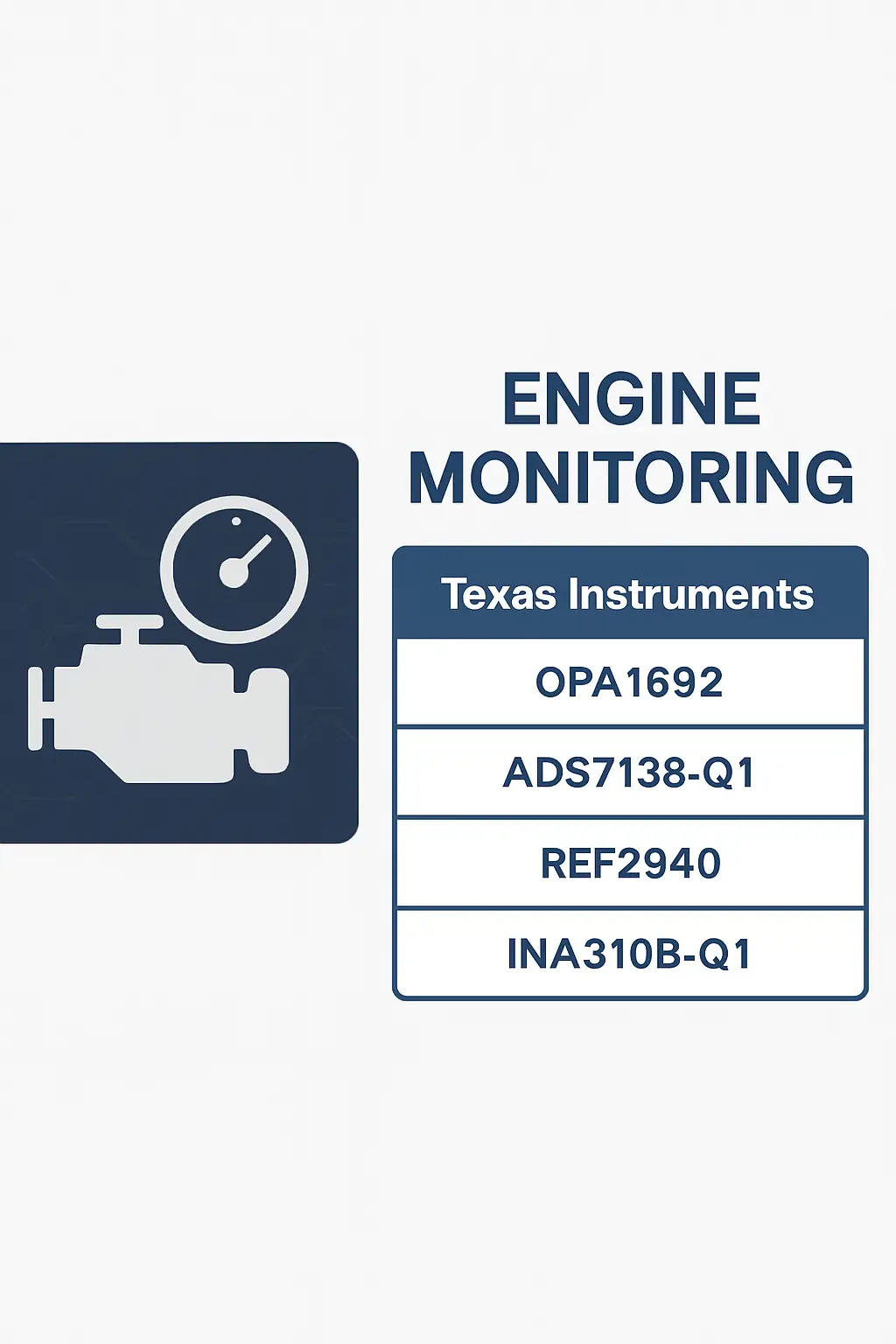Engine Monitoring
The "Engine Monitoring" module is a critical component within the "Engine Control Units (ECU)" of the "Powertrain & ICE Management" system in automotive electronics. It is designed to continuously monitor and analyze key engine parameters such as temperature, pressure, RPM, and emissions to ensure optimal performance and compliance with environmental standards. This system plays a vital role in detecting potential malfunctions early, improving vehicle reliability, and enhancing fuel efficiency.
Used in modern internal combustion engine vehicles, Engine Monitoring supports real-time data collection and diagnostics, enabling the ECU to make precise adjustments for better engine operation. It also contributes to the overall safety and longevity of the powertrain by preventing overloading and overheating. The module communicates with other vehicle systems, providing essential feedback for driver alerts and onboard diagnostic (OBD) functions.
This technology is widely applied in passenger cars, commercial vehicles, and hybrid systems, where accurate engine performance tracking is essential. By integrating advanced sensors and algorithms, Engine Monitoring ensures smooth and efficient vehicle operation, supporting both driver comfort and regulatory compliance. Its application extends to maintenance planning, helping technicians identify issues before they escalate into major failures. Overall, Engine Monitoring is an indispensable part of modern automotive electronics, enhancing vehicle performance, safety, and sustainability.
Details
Engine Monitoring

Related Parts
| Series Name | Description | Manufacturer Name | Attribute Description |
|---|---|---|---|
| Texas Instruments | Dual-channel, low-noise, precision JFET input operational amplifier with 12.6 nV/√Hz noise, 18 MHz bandwidth, and 2.8 V/μs slew rate, operating on ±2.25 V to ±18 V supplies. | ||
| Texas Instruments | 8-bit, 1.8V, I2C, 1MSPS, ultra-low-power, 8-channel, programmable data converter with GPIO and temperature sensor, operating at -40°C to +125°C. | ||
| Texas Instruments | 16-bit resolution, 8-channel input, 100 kSPS sample rate, SPI interface, single-ended inputs, 2.7V to 5.5V supply, low power consumption, internal reference, serial control. | ||
| Texas Instruments | 4.0V low-dropout voltage reference, ±0.2% initial accuracy, 25ppm/°C tempco, 1.8mA max quiescent current, 1μV/√Hz noise, operates from 4.5V to 16V input. | ||
| Texas Instruments | Dual operational amplifier, 36V, 1.5MHz, 2.5V/μs slew rate, -40°C to 125°C operating temperature, low noise, automotive grade. | ||
| Texas Instruments | Adjustable precision shunt regulator; 2.495V reference voltage; 1% tolerance; 100mA cathode current; operates from -40°C to +125°C; low dynamic output impedance; suitable for voltage regulation and feedback control. | ||
| Texas Instruments | 12-bit, 1 MSPS, 16-channel, low-power SAR ADC with SPI interface, operating at 2.7V to 5.5V supply, -40°C to +125°C temperature range, ±1 LSB INL, 89 dB SNR. | ||
| Texas Instruments | 12-bit ADC, 3.3ksps, single-channel, I2C interface, low-power, operating range 2.0V to 5.5V, internal reference, oscillator, and programmable gain amplifier. | ||
| Texas Instruments | 2-channel, 12-bit ADC, 140ksps, I2C interface, 1.62V to 3.6V supply, integrated oscillator, programmable conversion timing, low-power shutdown mode, I2C address selectable, operating temperature: -40°C to +125°C. | ||
| Texas Instruments | 12-bit ADC, 3300 SPS, 4-channel, I2C interface, single-ended/pseudo-differential inputs, internal reference, oscillator, and programmable gain amplifier. |








.png?x-oss-process=image/format,webp/resize,h_32)










